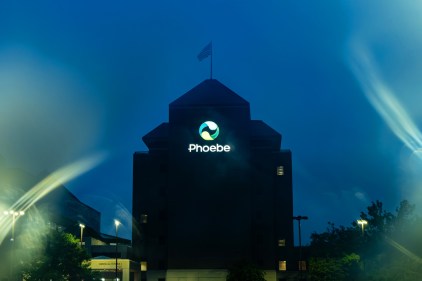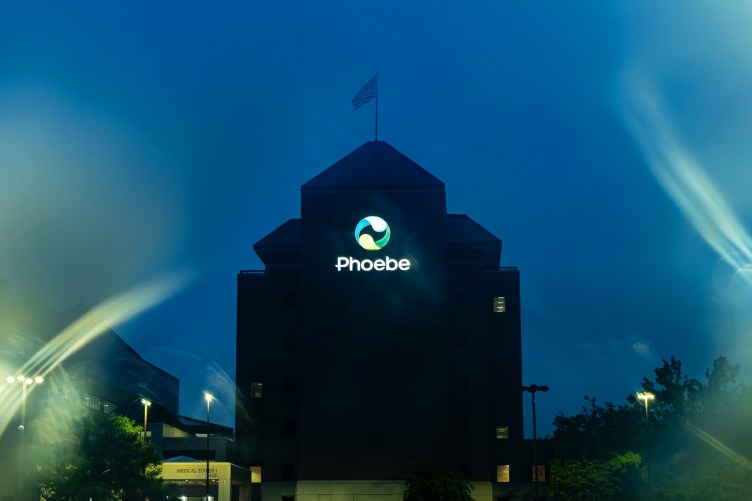The first complaints landed at the offices of Philips Respironics in 2010, soon after the company made a fateful decision to redesign its bestselling breathing machines used in homes and hospitals around the world.
To silence the irritating rattle that kept users awake at night, Philips packed the devices with an industrial foam — the same kind used in sofas and mattresses. It quickly became clear that something had gone terribly wrong.
The reports coming into Philips described “black particles” or “dirt and dust” inside machines that pump air to those who struggle to breathe. One noted an “oily-like” substance. Others simply warned of “contamination.”
The complaints targeted some of the company’s most celebrated devices built in two factories near Pittsburgh, including ventilators for the sick and dying and the popular DreamStation for patients who suffer from sleep apnea, a chronic disorder that causes breathing to stop and start through the night.
Yet Philips withheld the vast majority of the warnings from the Food and Drug Administration, even as their numbers grew from dozens to hundreds to thousands and became more alarming each year.
“Black shavings in the chamber,” said one 2011 report that was kept from the government. “Contaminated with unknown sticky substance,” noted another three years later. By 2015, the year Philips launched the DreamStation, the company had amassed at least 25 complaints that pointed to a specific cause — the foam was falling apart.
In June 2021, more than a decade after the first reports, Philips announced a recall of millions of machines that had been delivered to nearly every corner of the United States and dozens of other countries. The company acknowledged that the foam it had chosen could crumble in heat and humidity and send potentially “toxic and carcinogenic” material into the noses, mouths, throats and lungs of users.
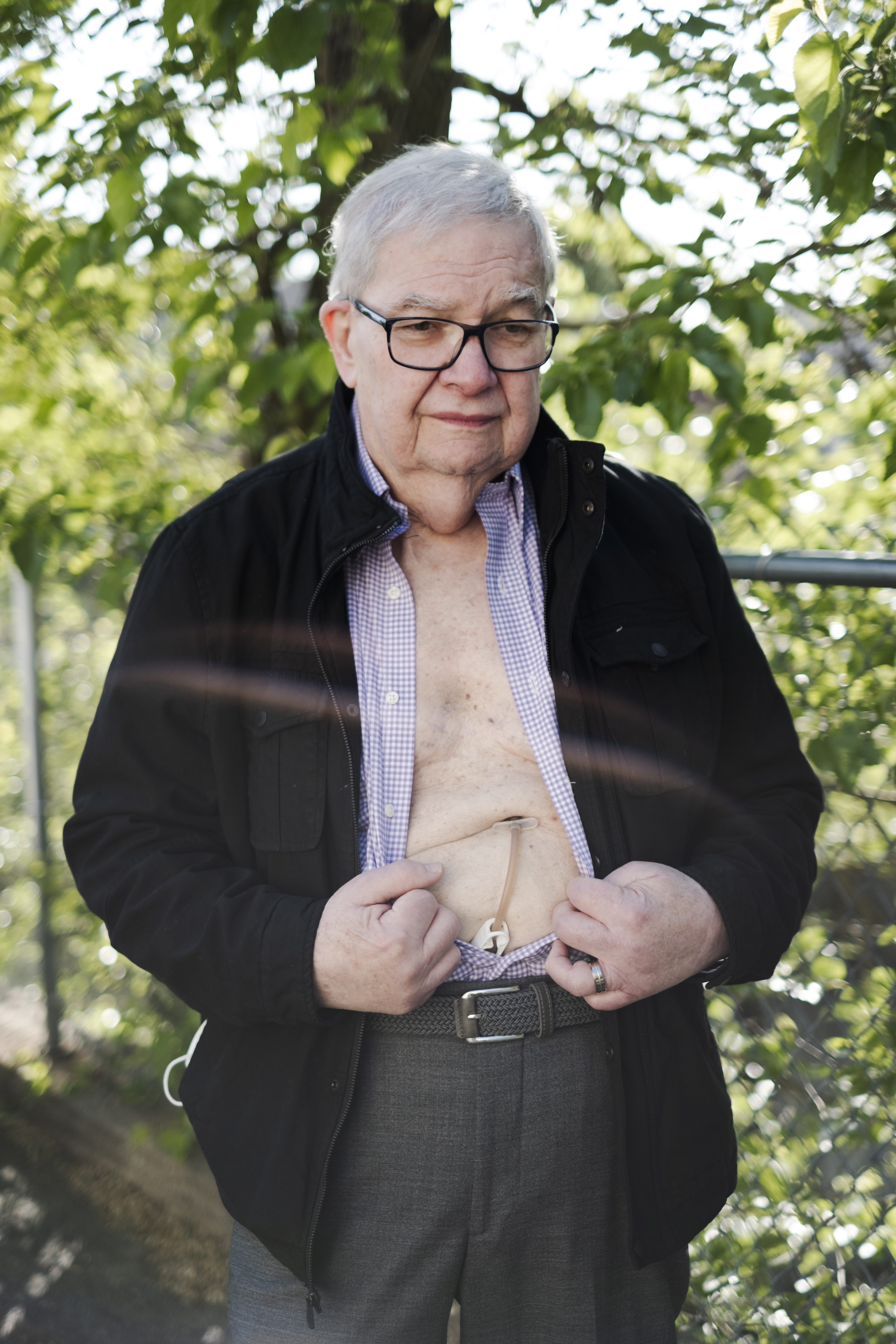
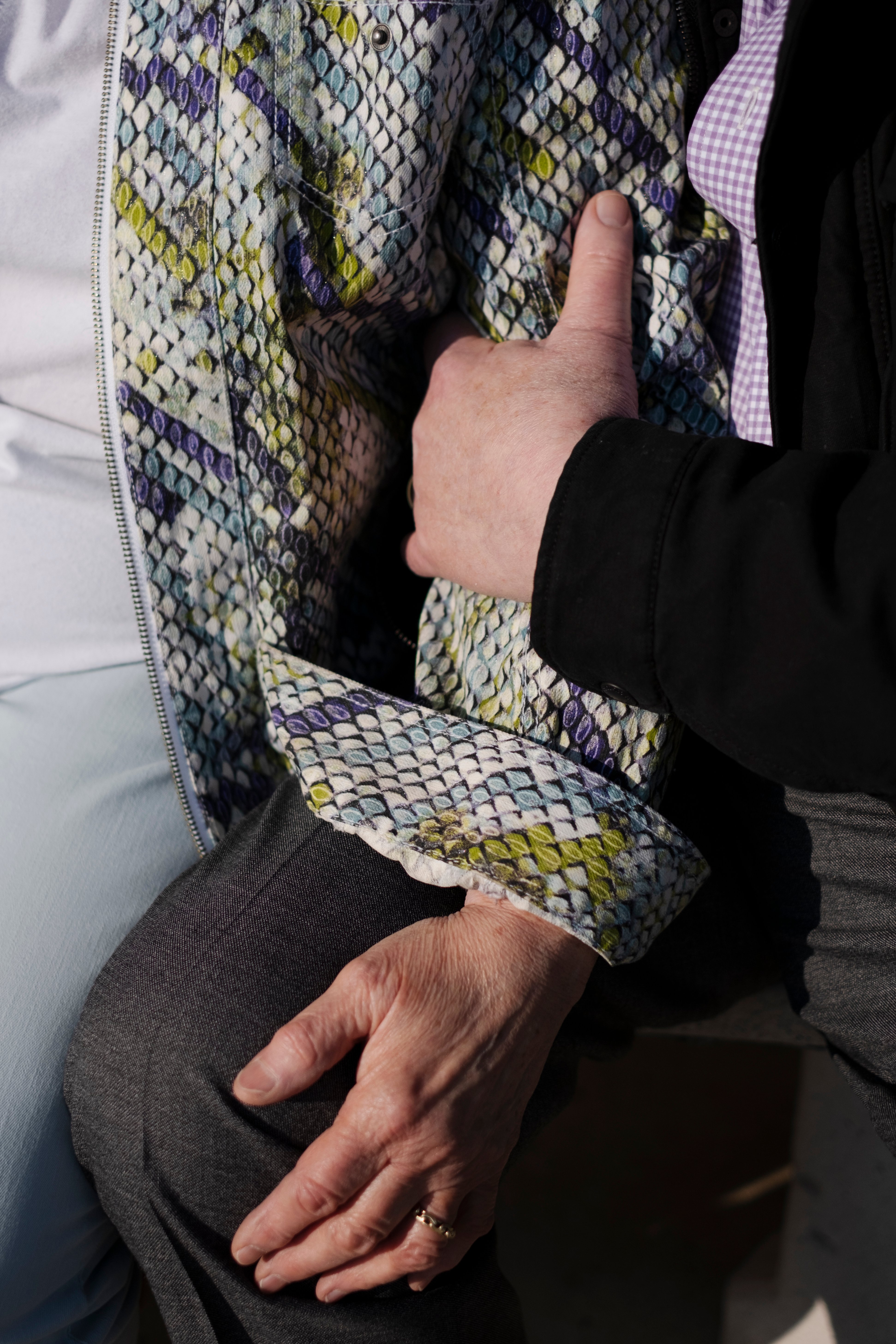
In a series of statements, the industry giant said it acted as soon as it learned of the “potential significance” of the problem.
But an investigation by ProPublica and the Pittsburgh Post-Gazette of the 11 years between the first complaints and the recall reveals a different story — one of a company that sought to protect its marquee products as stock prices soared to the highest levels in decades. Again and again, previously undisclosed records and interviews with company insiders show, Philips suppressed mounting evidence that its profitable breathing machines threatened the health of the people relying on them, in some cases to stay alive.
Read More
Federal law requires device makers to turn over to the government within 30 days all reports of patient injuries, deaths and malfunctions that have the potential to cause harm, and to take action to investigate them.
A ProPublica and Post-Gazette analysis of tens of thousands of reports shows that Philips withheld more than 3,700 complaints over 11 years from the FDA, which oversees medical devices. And the company did not launch a formal investigation of the problem until 2019 — nine years after the first wave of complaints and three years after the first known tests for the company found that the foam was degrading.
Instead, as the complaints continued to pile up in company files, Philips waged aggressive global marketing campaigns to sell more machines, including new models fitted with the hazardous foam.
The sales pitch worked: The devices went to infants, the elderly and at least 700,000 veterans. The company also promoted machines meant for some of the sickest people in the country, rolling out a new ventilator filled with the foam in the early months of the COVID-19 pandemic.
Philips didn’t stop even after the company learned the foam was breaking down in its ventilators in Japan and had to be replaced — and after tests in the United States revealed that the material released chemicals at dangerous levels. Among them: formaldehyde, a compound used in fertilizer, dyes and glues that has been tied to respiratory problems and certain cancers.
In 2018, the company called more than a dozen engineers and safety supervisors to a series of urgent meetings in Pittsburgh to investigate the problem in what eventually became known to insiders as Project Uno.
Still, the public was not warned.
All the while, people using Philips machines were suffering from illnesses that no one could explain: vomiting, dizziness and headaches, along with newly diagnosed cancers of the lungs, throat, sinuses and esophagus. One man in Philadelphia coughed so hard that he broke his ribs, and a Florida woman with a hacking cough was hospitalized for days and placed on oxygen.
“Unconscionable,” said Dr. Radhika Breaden, who scrambled at her Oregon sleep clinic to help thousands of patients who were using the devices. “We were all completely blindsided. You can’t have people inhaling black dust … without warning us.”

To examine what happened at Philips, reporters interviewed more than 200 former company supervisors, doctors, toxicologists, patients and the relatives of those who died, and obtained company records that show officials knew about the dangers but continued to sell machines that the FDA has since said are capable of causing severe illness or death.
Reporters also reviewed thousands of complaints submitted to the company and government describing device malfunction and injuries, including more than 370 reports of deaths. As part of the investigation, the news organizations collaborated with Mediahuis NRC, the publisher of one of the largest newspapers in the Netherlands, where Philips’ parent company is located.
In a statement to the news organizations, Philips said its top priority is patient safety and that it regretted “the distress and concern” caused by the recall. “We deeply apologize for that and continue to work hard to resolve this,” the company said.
Philips said complaints about the foam were limited in the years before the recall and that the reports were evaluated on a case-by-case basis. The company added that it became aware of the potential significance of the problem in early 2021 and launched the recall shortly after that.
Former company engineers and safety supervisors, who spoke on the condition of anonymity because they still work in the industry, said top officials at Philips repeatedly dismissed a dangerous breakdown that ultimately set off a worldwide health crisis involving as many as 15 million devices.
“It was a catastrophic series of errors,” said a former compliance supervisor. “There were people who knew and knew for a long time.”
Read More
In the months since the recall, the company has walked back its initial acknowledgement of the health risks posed by the degrading foam, saying tests on the DreamStation and similar devices show the chemicals released by the material fall within safety thresholds.
“The whole product complies with safety norms,” Roy Jakobs, chief executive officer of parent company Royal Philips, said last year.
ProPublica and the Post-Gazette obtained copies of four tests carried out in 2021 that were solicited by Philips. Three experts who reviewed the results for the news organizations dispute the company’s claim and point to another finding that they say is even more alarming.
The foam tested positive multiple times for genotoxicity — the ability of a chemical to cause cells to mutate, a process that can lead to cancer.
“You’re basically changing cells,” said one engineer who was familiar with the testing. “I don’t even know if we really scratched the surface of how bad this really is.”
In New York, 58-year-old retired music teacher and father of three Mark Edwards said he’ll spend the rest of his life fearing that a sleep apnea machine caused years of respiratory infections and two benign tumors in his throat.
Edwards brought home a DreamStation in 2017 and set it up next to his bed, where he sleeps with his rescued German shepherd, Tyson. He continued using it even after he said he began to spot black particles in his mask.
“I would wash it and use hot water, and then two days later, I would see it again,” he said. “I remember thinking, ‘What the hell is this?’”
After his machine was recalled, Edwards sued the company, one of tens of thousands of people joining litigation against Philips in federal court in Pittsburgh.
Edwards stopped using the device earlier this year and said his respiratory infections went away, but in April, he traveled to Florida to undergo a second surgery on his throat. As he waited in the hospital with his sister, he clutched a gold crucifix around his neck.
“If something happens to me in surgery, I’m ready to go,” he said, and then he was wheeled off to the operating room.
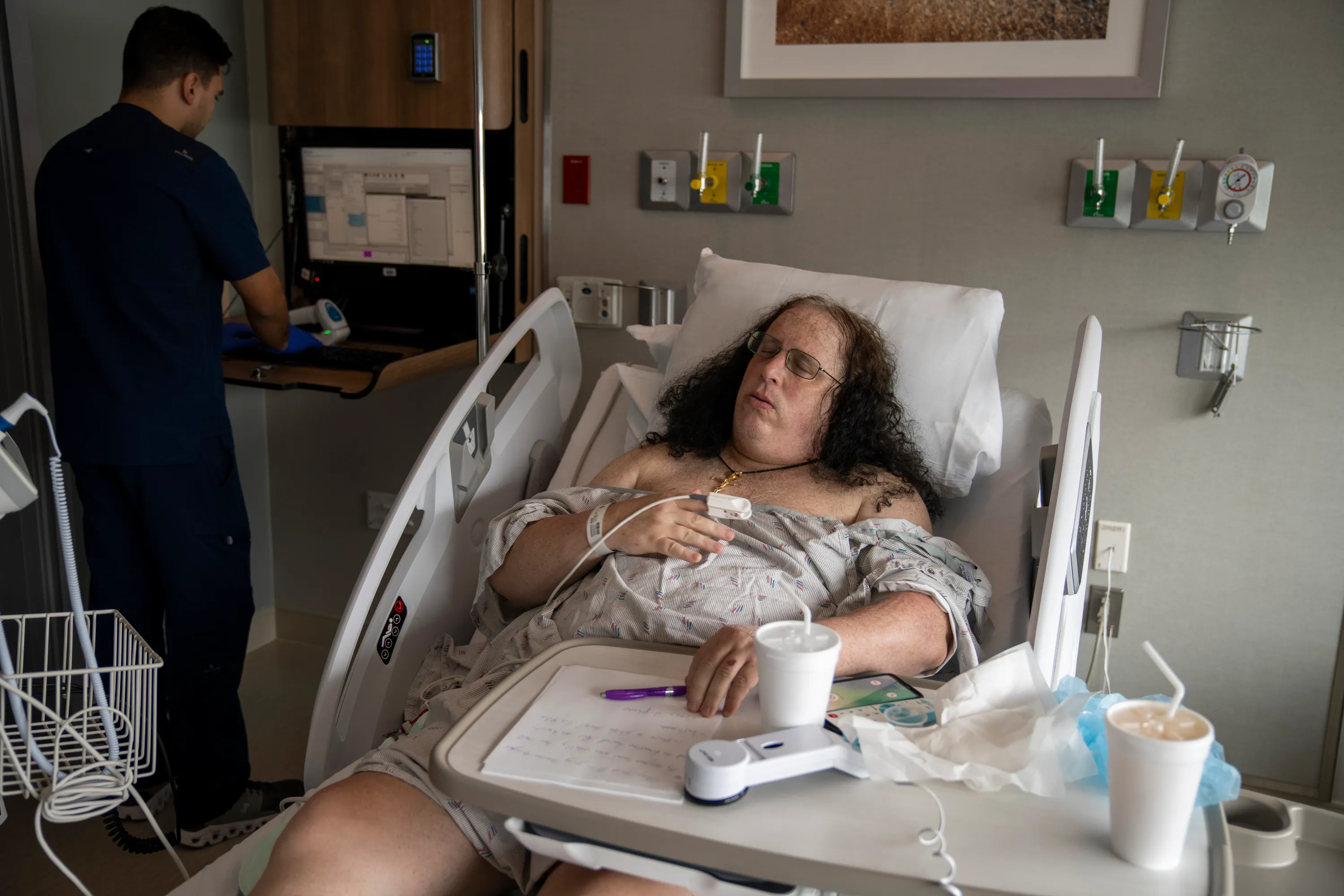
A Competitive Edge
Years before the crisis, inventor Gerald McGinnis sat in his suburban Pittsburgh kitchen next to an avocado-green stove and Betty Crocker cookbooks, fretting about patients forced to breathe through tubes inserted into their windpipes.
The mechanical engineer knew he could create something better.
Throughout the 1980s, McGinnis invented a series of breathing masks and ultimately developed the nation’s first mass-produced continuous positive airway pressure, or CPAP, machine, sold under the banner of his growing company, Respironics.
During a scientific renaissance that transformed Pittsburgh from a steel town into a hub for medical innovation, the company became a dominant player in a thriving industry that would change the lives of those struggling with sleep apnea.
In Obstructive Sleep Apnea, Throat Muscles Relax and the Upper Airway Collapses, Blocking Airflow
The disorder causes people to repeatedly start and stop breathing in their sleep, and it can be treated with a CPAP machine.

CPAP mask
Air flows in through the mouth and nose
Blocked airway
A CPAP machine uses air pressure to keep the airway open

Air flows in through the mouth and nose
Blocked airway
CPAP mask
A CPAP machine uses air pressure to keep the airway open
For the millions of people impacted by the condition, CPAP machines were game changers, allowing them to breathe normally at night — often for the first time in years.
“It was the gift from heaven,” said McGinnis, now 89, whose company grew to 4,900 employees and more than $1 billion in revenue by 2007.
Everything changed when Royal Philips, the conglomerate known for light bulbs and televisions, showed up at his door, he said in an interview with ProPublica and the Post-Gazette.
The company from Amsterdam had just purchased several medical equipment companies in the United States and aimed to take over Respironics. At first, Respironics rejected the Dutch company’s bid, but finally agreed to sell in 2007 under the threat of a takeover, McGinnis said.
“They said, ‘We want to buy the company, regardless, whether you want to do it the hard way or the easy way,’” said McGinnis, then board chairman. “In less than six months, they cleaned us out. I felt like I lost my third daughter.”

Soon after taking control of the Pittsburgh company, the new subsidiary called Philips Respironics made a critical decision.
Locked in a race to make its breathing machines quieter, the company inserted the foam to muffle sound. The change was a triumph in the world of sleep apnea, a way to quiet the humming, vibrating machines that disturbed patients and their partners as they slept.
Unlike its top competitor, which chose a different foam to quiet the machines, Philips selected one made of polyester-based polyurethane, the same kind of material used in furniture, shoes and other products.
Though it is unclear why the company chose the material, Philips noted in a 2009 patent that older solutions to reduce sound were “ineffective, inefficient and/or expensive.”
It was a risky move. Studies published in scholarly journals showed the foam broke apart in heat and moisture. The company used it anyway, even though the machines send air for hours at a time into the lungs of users.
“Anybody who has half a brain cell in chemistry knows that this was a stupid idea,” said the engineer who was familiar with the recent testing.
Soon, alarming reports began to surface.
In June 2010, Philips found that a machine sent back to the company by a customer was contaminated with “foam particles,” FDA records show. Rather than alerting the government as federal law required, records reveal that the company kept the report about the problem in-house for the next decade.
A similar report came in the following year, describing another CPAP with “black contamination.” That, too, was not turned over to federal regulators.
Another report was also held back, this one from a patient who found particles in the tube that carries air to the nose and mouth. A complaint two years later described a 3-year-old girl who was using a ventilator with a filter that had turned black.
By the end of 2014 — about six years after Philips started using the foam — more than 500 reports from health care workers, patients and others had flooded the company in a pattern that would not be revealed to the government or the public for years, the records show.
Philips said the company had previously determined that the complaints did not need to be reported but later changed course and turned them over “out of an abundance of caution” after the FDA got involved.
In an email, the FDA confirmed that the company “was in possession of numerous complaints” that should have been submitted to the government.
In most cases, the news organizations found, Philips labeled the reports that it was late in submitting as “foam degradation” complaints. That included at least 10 reports where the patient outcome was listed as a death, though there was little information about the patient or their cause of death.
Philips Received More Than 3,700 Reports About Foam Problems Before Recalling Machines
For more than a decade, the company used the polyester-based polyurethane foam in its ventilators and CPAP (continuous positive airway pressure) machines to reduce noise. In that time, it received thousands of complaints about “dust contamination,” “black particles” and “foam degradation.”

2020: Some of the company's top supervisors take part in health hazard evaluations, which find that the crumbling foam and the chemicals it released could cause "serious injury, life-threatening or permanent impairment."
Recall
launched
2015: Philips receives information about degrading foam in its ventilators in Japan. Subsequent tests show that the foam could break down in heat and humidity, sending material into patients' masks.
2018: A mechanical engineer at Philips acknowledges in an email that the foam is “disintegrating” and writes, “This is not a good situation for our users.”

In 2015, Philips received new and troubling information from overseas. Another Royal Philips subsidiary received complaints about degrading foam in Japan, where Philips had delivered ventilators.
Philips could have alerted customers and federal regulators or moved to repair all of its machines. Instead, the machines were repaired in Japan but Philips kept using the foam everywhere else, government records show.
That same year, graphic artist and painter George Bales put a Philips CPAP machine on a nightstand in his New Jersey home, unaware of the foam hidden inside the device. Every night for the next six years, he used the machine as he slept next to his wife, a pediatrician who used to nudge him awake to make sure he was breathing.
Long retired, Bales spent hours in the kitchen, perfecting his marinara sauce for dinner parties, until he developed a sore throat and congestion that wouldn’t go away in 2021.
Doctors found a malignant tumor near one of his vocal cords. Bales, who now has trouble swallowing and uses a feeding tube inserted just above his belly button, acknowledges he may never know whether the recalled machine caused his cancer. But he said the company should have warned customers years earlier.
“No one ever informed me that this machine might be killing me,” said Bales, 78, who is suing Philips. “I’m now suspicious of everything I take into my body.”

Elvis and Air Fryers
As complaints inundated the company, Philips launched marketing campaigns to sell its devices around the world, from Toronto to Paris to Sydney. In Brazil, one doctor prescribed the machines to 1,200 patients — the youngest just six months old.
The company showed up at international health conferences in Berlin and Dubai to promote the devices, in one case with the help of an Elvis impersonator.
In advertisements, Philips declared that its CPAP machines were far quieter than those put out by its top competitor. “Rediscover dreams,” the company said. In 2017, Philips offered free air fryers to anyone who bought a DreamStation.
“From the very beginning, they wanted to put CPAPs in the supermarket as a long-term project,” said Laura Adorni, a former sales director at Philips in Italy. “They already had razors, toothbrushes, aerosol devices in pharmacies and shops, so why not also have a CPAP?”
Anatomy of CPAP Machine
A common treatment for sleep apnea, a CPAP machine keeps the upper airway open to allow unobstructed breathing. The device improves sleep quality and may reduce the risk for a number of health issues, including heart disease and stroke.

Pressurized air
Air is delivered through the tubing and mask to the throat, where the pressure keeps the airway open and allows the user to breathe naturally
Heated humidifier
Warms and humidifies the air supplied
Air intake
Flexible heated tubing
The CPAP unit draws in air from the room and passes it through a small filter
The tube's warmth helps maintain the preferred level of humidity
As the company promoted its machines, Philips cut deals beginning in 2012 with local medical equipment suppliers that sell the devices directly to patients — drawing the attention of federal investigators.
In one case, the government accused Philips of giving suppliers a coveted database about the prescribing practices of doctors. In exchange, prosecutors said, Philips expected the suppliers to recommend the company’s breathing machines, which are often paid for through Medicare and other public programs.
“Move … share in our direction,” a sales director at Philips wrote in an email to his team about the arrangement.
Prosecutors later alleged that the exchange of the database — which can cost more than $100,000 — amounted to an illegal kickback scheme and reached a settlement with Philips, which eventually agreed to pay $24 million without admitting wrongdoing. In its statement to the news organizations, the company said it agreed to settle to avoid the expense of further litigation.
In 2015, Philips was moving to dominate the market, but the foam problem threatened the momentum. That year, a company engineer questioned the supplier, emailing, “Have you ever seen this occur to the foam?” company records show.
Two and a half years later, as new complaints came in from Australia, Philips scientists were summoned to a series of emergency meetings outside Pittsburgh to come up with a plan. The day after one of the sessions, another engineer detailed the safety risk in an email to the foam supplier.

“The material sheds and is pulled into the ventilator air path. As you can imagine, this is not a good situation for our users,” engineer Vincent Testa wrote that April, sharing photos of the foam breaking apart. “I flagged this message with high importance since we are addressing a potential safety concern.”
Without alerting the FDA or the public, the company started replacing the foam in some ventilators but once again left the vast majority of machines untouched, including the widely used DreamStation, FDA records show. Testa did not respond to interview requests.
Customers weren’t told even as debris turned up on their bedsheets, pillows and faces.
Outside Indianapolis, Connie Thompson slept every night with a DreamStation by her side, next to a blanket with a picture of the Disney character Elsa.

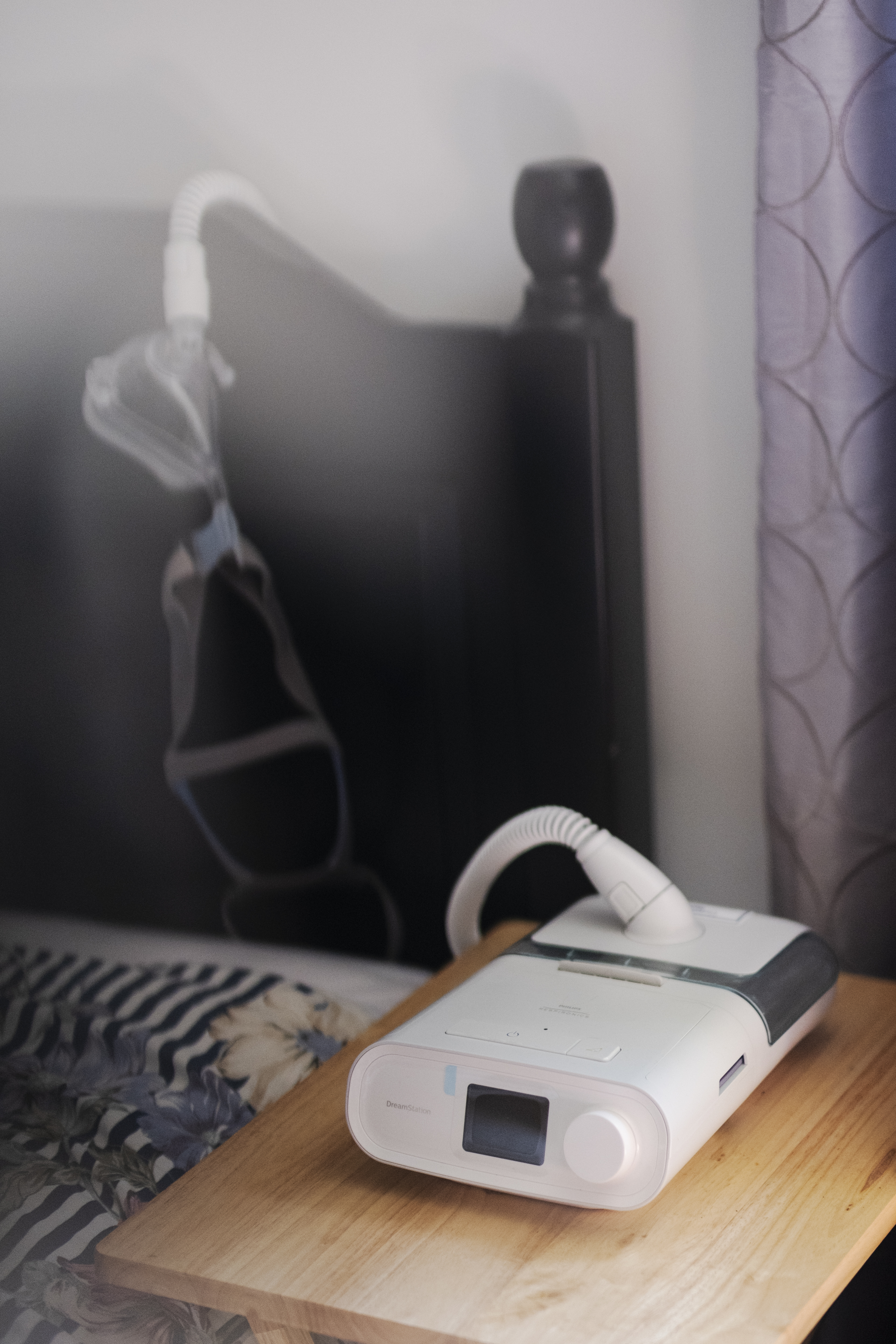
She got the machine to treat sleep apnea and used soap and water to clean out the black particles that started showing up in the tube connected to her mask, she said. Thompson, a community activist who fought for safe drinking water in her hometown, said she had no idea about the menace in her own bedroom.
“It’s almost like a betrayal,” said Thompson, now a 24-year-old college student studying public safety.
South of Baton Rouge in the Iberville Parish of Louisiana, 62-year-old Sheriff Brett Stassi said he regularly found black particles on his pillow.
He spent four years using a DreamStation before he was diagnosed with kidney cancer, rushed into surgery and put on a rigorous course of treatment. After the recall, Stassi said he learned from the FDA and others that particles released by the foam could harm the kidneys and liver.
He is hoping to complete his fourth term as sheriff before he retires to spend more time with his grandchildren, whose pictures fill his wood-paneled office, and to cheer on his beloved Louisiana State University football team.
As a longtime investigator, Stassi said he’s baffled by the company’s decisions.
“They knew about it, did nothing about it and then started working on a fix,” said Stassi, who is suing Philips. “People matter. You only get one chance to do it right.”

The COVID-19 Surge
As the pandemic erupted and countries raced to gather ventilators to fight a virus that attacked the lungs, Philips was well positioned to meet the demand.
In March 2020, the company reached out to the U.S. government.
Nathan Naylor, a Philips vice president, emailed the Department of Veterans Affairs and included information about the V30, which featured alarms and nine settings for sick patients.
“Good for America,” Pamela Powers, the agency’s then chief of staff, wrote two weeks later. “We appreciate your company’s partnership for sure.”
That ventilator, however, was built with the problem foam and was one of about 20 models of Philips breathing machines that were later recalled.
In an email, the VA said it did not know about the foam until the recall and could not comment on the email exchange. The agency said it distributed several hundred thousand of the now-recalled machines over the years but did not say whether any were the V30s.
Naylor is no longer with the company and did not respond to interview requests.
In the spring of 2020, as the COVID-19 virus raged and thousands died, Philips boosted production of another ventilator to help ease the burden on overwhelmed intensive care units.
These, too, were built with the same foam.
Over the course of the year, operating profits from ventilators, CPAP machines and other devices soared to about $800 million, more than double what they were the year before, according to reports by Philips’ parent company.
Response from customers “remains very positive, resulting in market share gains,” Royal Philips’ then-CEO Frans van Houten said during a fourth-quarter earnings call.
During the call, van Houten made no mention of the turmoil inside the company, including internal studies that showed the DreamStation had failed emissions testing for volatile organic compounds. The chemicals can be found in everyday products, such as gasoline, paints and pesticides, but in breathing machines, the fumes can be inhaled for hours at a stretch.
“You just flooded the market with a product that had a problem,” said the former Philips compliance supervisor. “I knew it was bad. They should have fixed the problem early, a decade ago, when they had the chance.”
When contacted, van Houten said he was preparing a response but later declined to comment.
As the pandemic wore on, Philips carried out a series of new studies on the foam — all with bleak results.
About a dozen company officials began to take part in two “health hazard” evaluations in late 2020, including Gary Lotz, the head of global clinical and scientific affairs, Andy Zeltwanger, director of regulatory affairs, Erin Levering, medical safety manager, Neal Pry, manager of quality engineering, Doug Roberts, design quality engineer in safety risk management, and Dr. John Cronin, the medical leader for sleep and respiratory care, company records show. Rodney Mell, head of quality for the sleep and respiratory unit, approved at least one of the studies.
None responded to requests for comment.
The evaluations showed that the deteriorating foam and the chemicals released by the material could cause “serious injury, life-threatening or permanent impairment.”
Both summed up the risk with a single word in capital letters: “UNACCEPTABLE.”
Mounting Injuries
Inside Philips, engineers were working on another new device that would ultimately replace the company’s first-generation DreamStation.
In April 2021, Philips unveiled the DreamStation 2, a sleeker and more advanced model with a color touch screen and more personalized settings. Another change separated the new model from the old one: Philips chose different foam, one that would hold up in heat and humidity.
With the launch of the new device, the company’s stock price reached a high of $61 a share — more than double what it was five years earlier.
It was only then, during a late-April earnings call with investors, that Philips for the first time revealed that the foam it had used for years in millions of machines was at risk of breaking down.
“Regretfully, we have identified possible risks,” said then-CEO van Houten, adding that the company had set aside 250 million euros to deal with the problem. “We are taking proactive action here.”
Van Houten went on to reassure investors: “The device is safe to be continued to use to the best of our knowledge at this time.”
The company alerted the FDA but said nothing to its customers — news reports at the time were largely limited to the company’s positive earnings. Over the next six weeks, more complaints came in, one after another:
“Black particles are found in the filter. She had been spitting green phlegm,” noted one report in May.
Another report in June: “Caused the patient to develop lung nodules.”
Philips Withheld Thousands of Complaints About Foam Problems From the FDA
After Philips issued a recall in 2021, the company turned complaints over to federal regulators, including more than 2,500 that it had withheld for more than two years.
Not until the middle of that month did the company announce a voluntary recall, acknowledging that the foam could release chemicals or break into particles capable of causing life-threatening injuries.
Philips said potential health problems included asthma, dizziness, vomiting, respiratory-tract irritation and “adverse effects” to organs including the kidneys and liver. The company also said the material could present a cancer risk.
“It’s one of the two or three worst things I have ever seen,” said Dr. Sidney Wolfe, a longtime medical researcher and founder of Public Citizen’s Health Research Group in Washington, D.C. “It was unacceptable to sell these machines.”
After the recall, then-CEO Van Houten said the company had used the foam since 2008. “I very much regret the impact of the … recall on patients, care providers and shareholders,” he said.
The true extent of the crisis may not be known for years.
As news of the problem spread, customers and others stepped forward by the thousands, describing emergency room visits and sudden illnesses in reports submitted to Philips and the government. The reports detailed nearly 2,000 cases of cancer, 600 liver and kidney illnesses and 17,000 respiratory ailments.
“Recurring sinus infections, inflammation, chest pain,” one CPAP user wrote in July 2021.
“I have constant headaches,” another said in December. “Now I am living in my own hell on earth.”
In several cases, the reports described patients who inhaled pieces of foam.
“Caused a patient to vomit,” one report said that month. “The patient was unable to remove the mask and expired.”
In a Philadelphia apartment he shares with two cats, lawyer Roger Traversa broke several ribs while coughing two years ago. In the hospital, doctors drained two and a half liters of fluid from the wall of his lungs.
After his CPAP machine was recalled, he went to a local flea market and spent $60 on another device made by a Philips competitor.
“I feel much better,” said Traversa, who is also a plaintiff in the ongoing lawsuits. “Now I can go … most of the day without having a coughing fit that drives people nuts. It was a great relief.”
Philips said the reports of illnesses and injuries are not evidence that its devices caused harm. But six medical experts who spoke to ProPublica and the Post-Gazette said the complaints are an indisputable indicator of a sprawling public health crisis. They said more harm is likely to emerge in coming years, much as the effects of tobacco and asbestos only became clear decades later.
“If you shoot tiny pingpongs down airways to obstruct the lungs, you can imagine the potential consequences,” said Dr. Robert Lowe, a retired emergency room physician and public health researcher in Oregon who used a DreamStation before it was recalled.

Philips has pointed to studies from France and Canada that found Philips CPAP users were not at higher risk of cancer. But those studies described limitations: The analysis in Canada lacked information about whether patients used their machines regularly and the researchers in France acknowledged that more time and a larger sample size could produce more definitive results.
John James, former chief toxicologist for NASA, said it’s far too early to assess how much damage has been done.
“You can’t trivialize the problem,” said James, who was responsible for ensuring that astronauts had clean air. “You’re basically putting this in the air stream of a human being breathing straight through that material.”
Other claims by Philips have also been met with skepticism.
The company has frequently pointed to an ozone cleaner used by some customers to disinfect their devices, saying the product accelerated the breakdown of the foam. But the FDA has said that the machines themselves, not the cleaners, presented “unreasonable risk to patients.”
Philips has also said that only a small number of recalled machines showed evidence of disintegrating foam after a visual inspection. But a 2021 report by experts in the company, obtained by ProPublica and the Post-Gazette, concluded that there was no way to tell by simply looking how much the foam had broken down.
Since the recall, the company has said that testing on the DreamStation and similar devices shows the chemicals released by the foam — including phenol, which can cause lung damage and dizziness — are not at levels that can cause “appreciable harm” to patients.
The company acknowledges that the foam tested positive for genotoxicity — its own experts described “uncontrolled cellular replication” — but said that a third-party assessment still concluded the machines are unlikely to cause harm.
The three experts consulted by the news organizations said that’s not possible. While safety thresholds for chemical emissions vary and findings can be open to interpretation, genotoxicity means that one or more chemicals are changing cells, the building blocks of the human body.
“You can’t make the argument that it’s safe. That’s bad science,” said the engineer familiar with the Philips testing. “It’s a real-life failure that shows you have a problem. There’s no ambiguity. There is unacceptable risk. Full stop.”
The company’s ventilators also tested positive for genotoxicity; Philips said the devices are still being assessed.
The safety claims have raised concerns among employees and others involved in the testing, interviews and text messages show. In August 2021, two months after the recall, one Philips engineer sent a series of texts to a colleague about a lab hired by Philips to test the foam.
“It was obvious that he was trying to pass the device by any method that would work,” the engineer wrote.
In its statement, Philips said the tests were conducted “in the most rigorous and objective manner possible.”
Documents related to the testing were turned over to the Justice Department earlier this year in what has become a sweeping investigation into the company’s testing practices and safety claims, according to sources familiar with the matter. Through a spokesperson, the Justice Department declined to comment.
Philips has acknowledged that it is in discussions with federal prosecutors and that the company received a subpoena last year for information about the events leading up to the recall.
“It’s All About Money to Them”
Now, more than two years after the recall announcement, patients say they are desperate for information about what went wrong.
In Louisiana, 56-year-old Army veteran Jules Lee said he still doesn’t know whether his nagging headaches and sinus congestion were caused by the Philips CPAP machine that he used for three years. He stopped using it about six months before the recall even though he suffers from sleep apnea and worries about dying in his sleep.
“I’m fearful and untrusting,” said Lee, who struggles with post-traumatic stress disorder after serving in the Gulf War in the early 1990s.

More details about the health risks are expected to emerge through the ongoing federal lawsuits in Pittsburgh. Earlier this month, the company reached a settlement in one of the cases, agreeing to pay at least $479 million to reimburse customers and others for the costs of the defective machines.
Other legal challenges are still ongoing, including more than 600 personal injury claims and a class-action suit seeking ongoing medical monitoring and research on the dangers posed by the devices. In court documents, the company argued that the lawsuits failed to prove the machines were responsible for injuries and illnesses.
In recent months, parent company Royal Philips has sought to distance itself from the crisis. During a shareholder meeting in May, new CEO Jakobs said the U.S. subsidiary had received complaints about the devices beginning in 2015. “They did some action and they closed it and carried on,” he said, without elaborating.
Jakobs himself, however, was in charge of overhauling the division that produces sleep apnea machines and ventilators as the internal crisis unfolded and as Philips was pitching devices that contained the foam during the pandemic. Through the company, Jakobs did not respond to interview requests.

Two former company managers said it’s likely officials in Amsterdam were aware of the crisis, given the scale of the problem and the importance of the devices to the company’s bottom line.
“I truly believe those folks knew about it all along,” said the former regulatory supervisor at Philips. “They tried to keep it pinned down as much as possible.”
McGinnis, the founder of Respironics, said Philips breached a fundamental tenet in the medical device industry by not acknowledging the problem early on.
“We had a lot of products we had to shut down,” he said. “You worry about it, think about it, look into it. You have to take on the responsibility. You can’t blame it on somebody else.”
In New York, Edwards, the longtime music teacher, is still recovering from his second throat surgery. He spends most of his time in an apartment he shares with his wife and dogs. Drumsticks from his years as a heavy metal rocker sit untouched in a display case on the wall.
Now using a refurbished CPAP machine, Edwards said Philips should be held accountable for failing to warn its customers about the dangerous defect long ago.
“It’s all about money to them — that’s the bottom line,” he said. “One day they’ll have to answer for what they’ve done.”
Help ProPublica and the Pittsburgh Post-Gazette Investigate the Recall of Philips Respironics Breathing Machines
If you’ve reported a death or injury or struggled to get a device replaced, we’d like to hear about your experience with the company.










